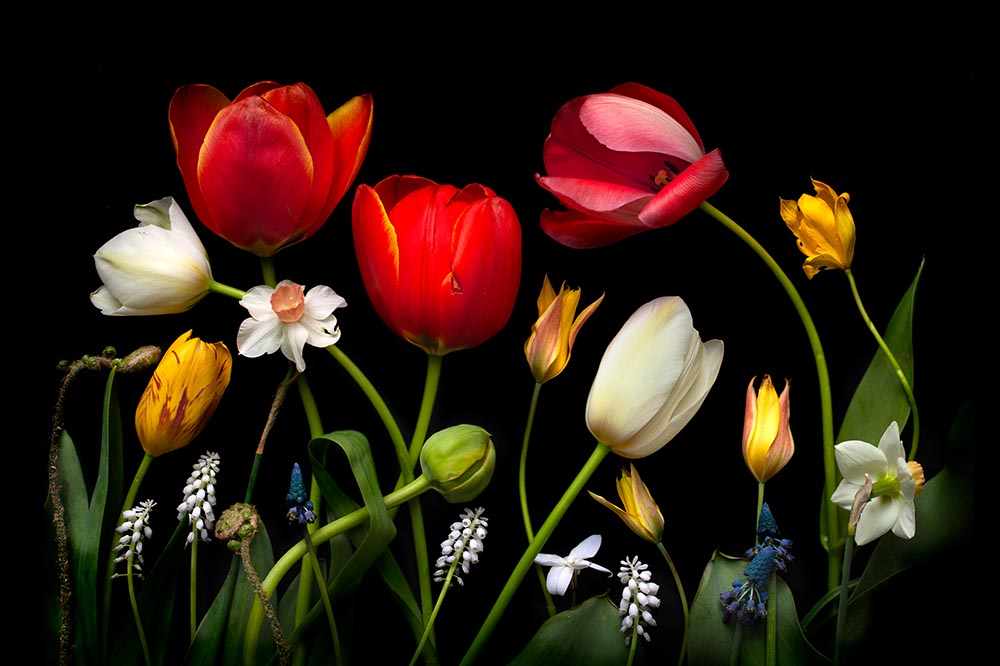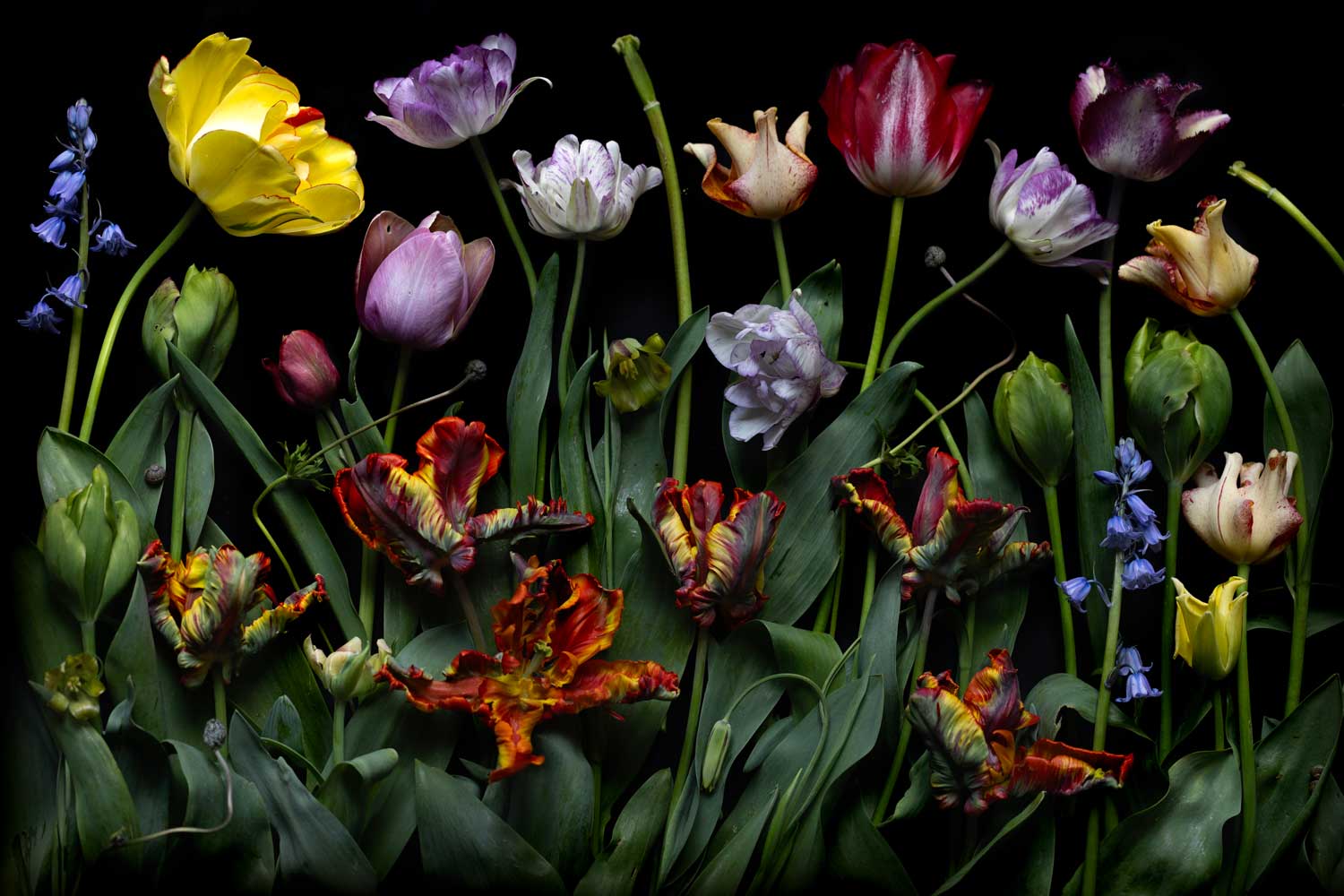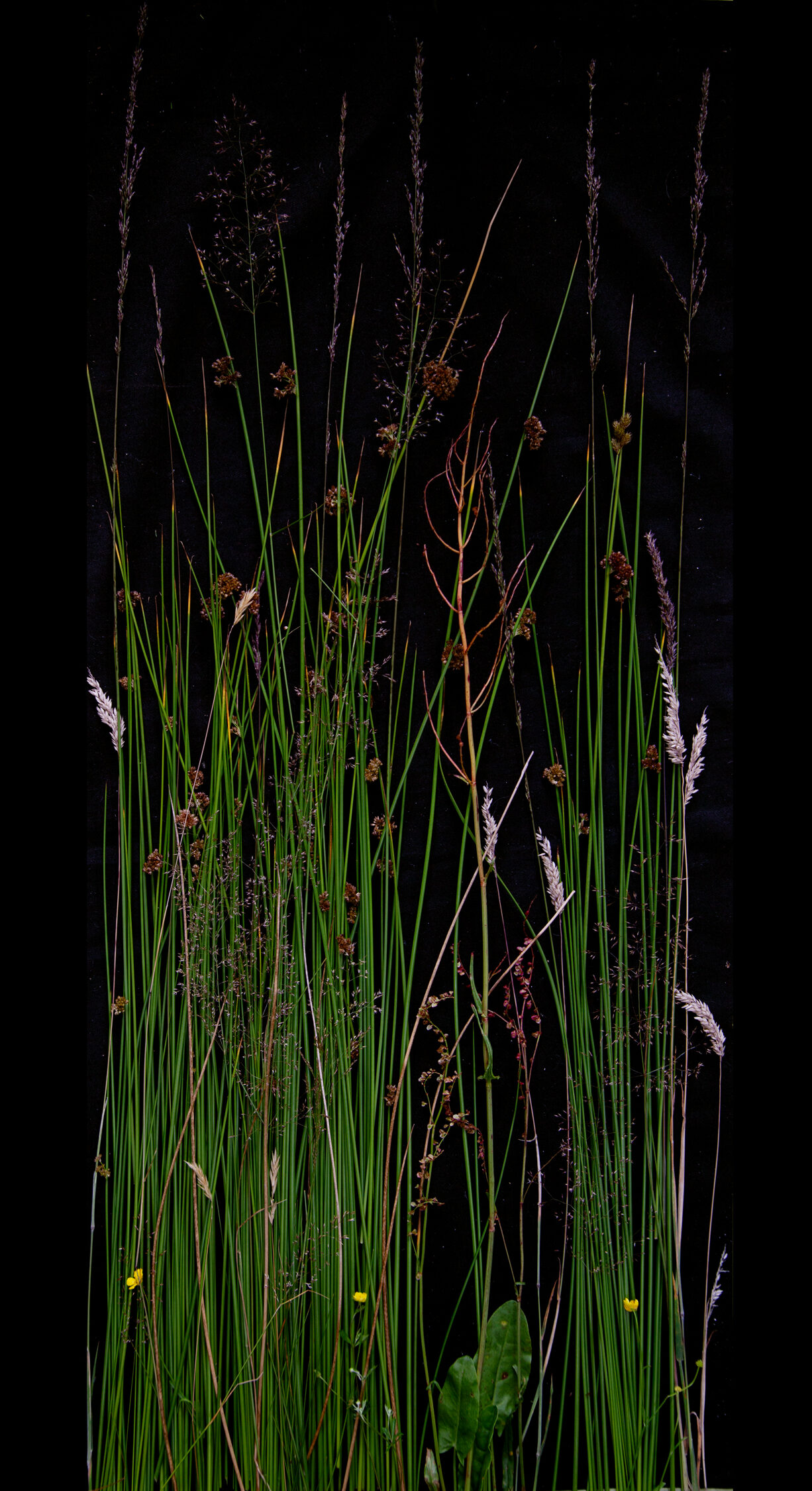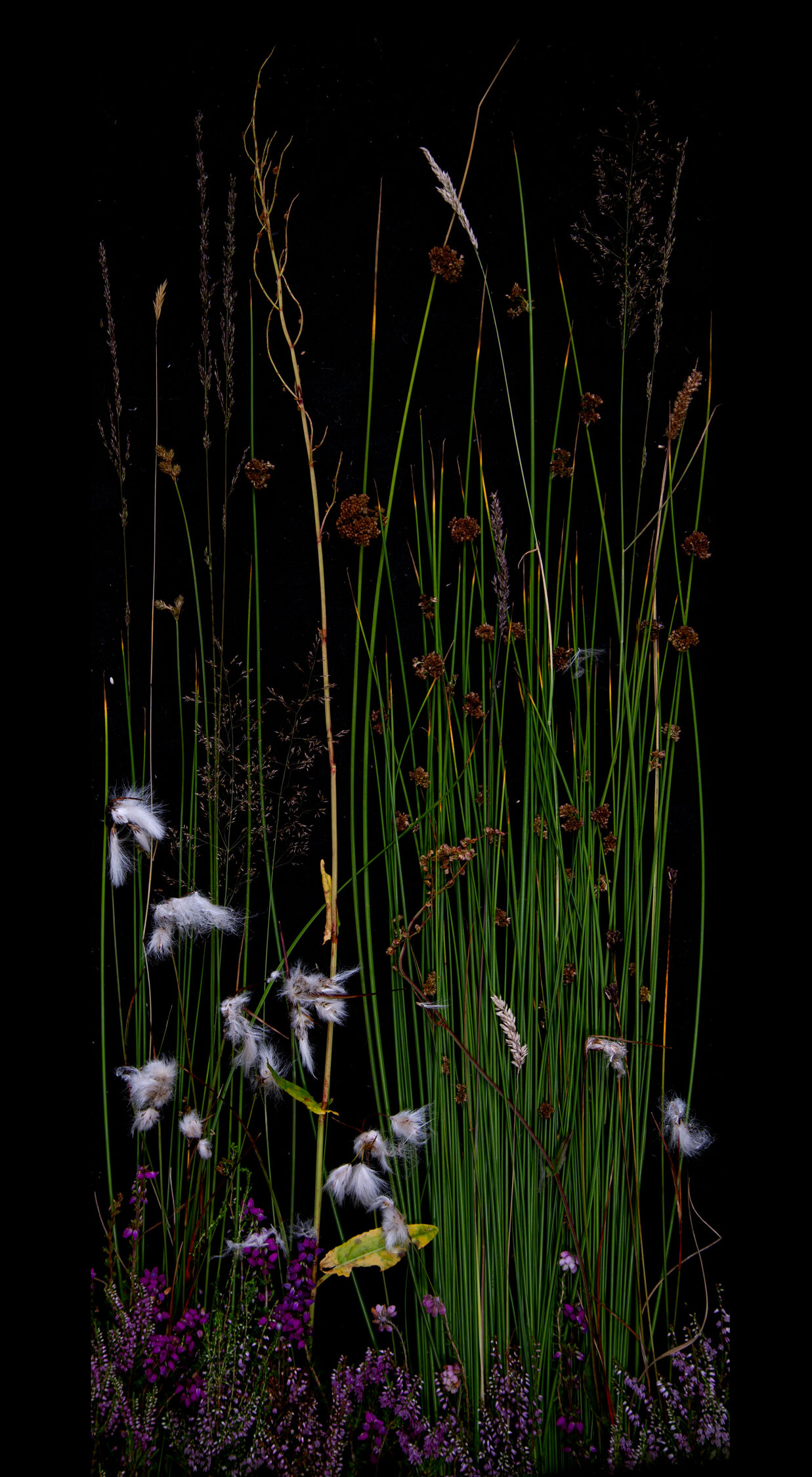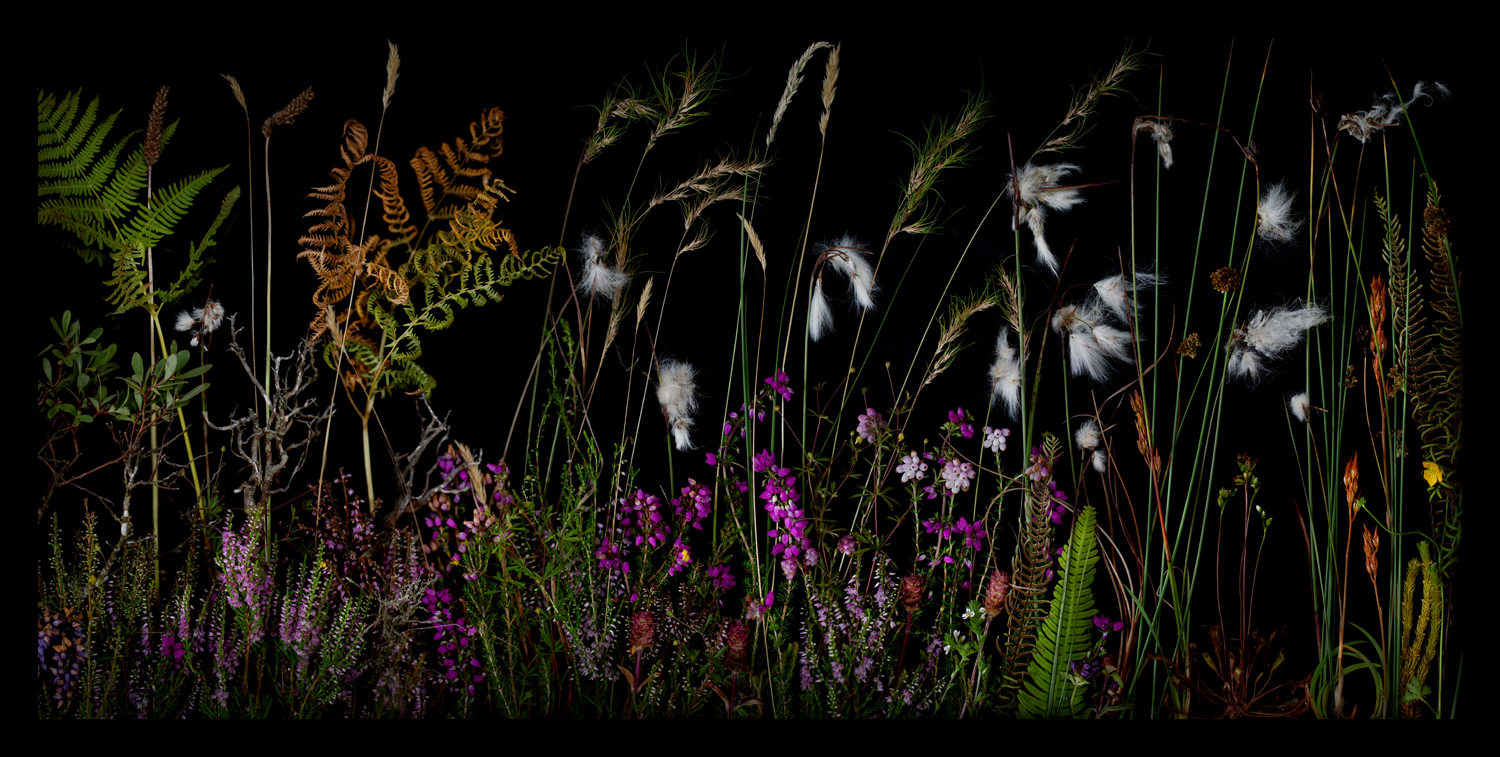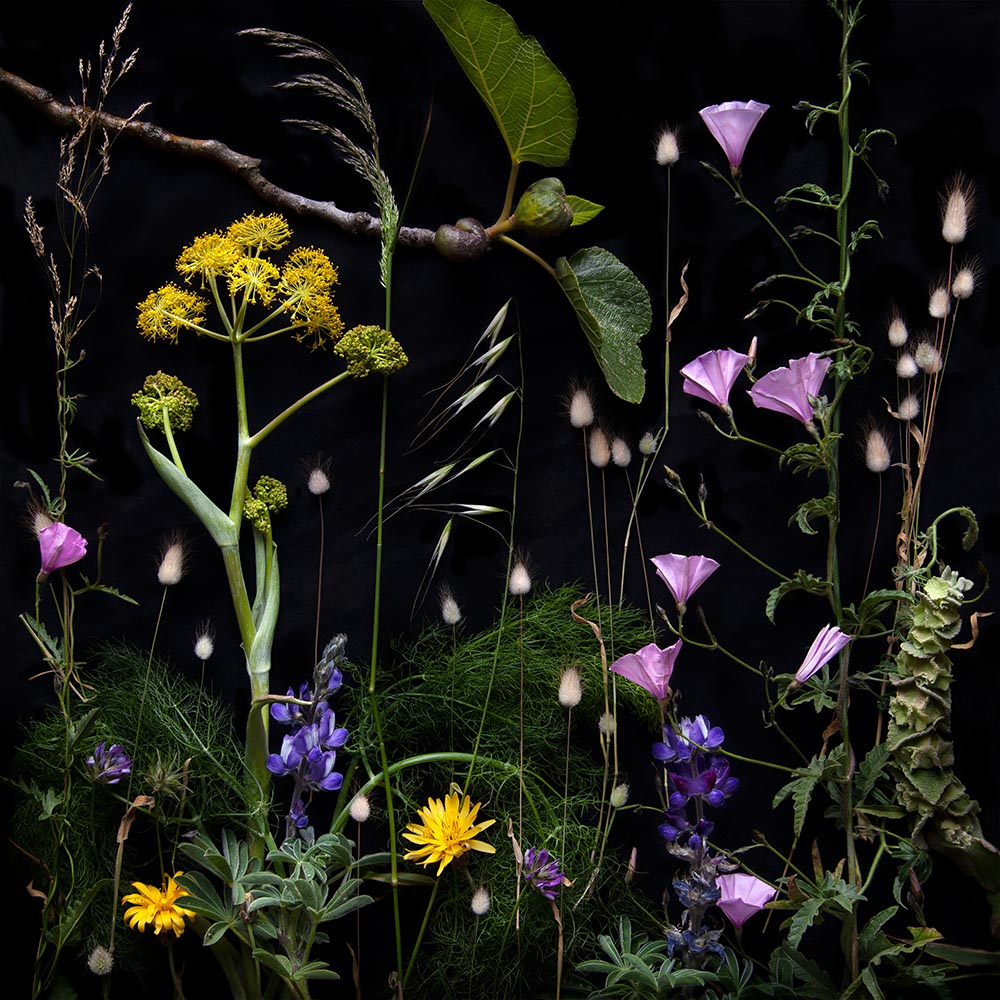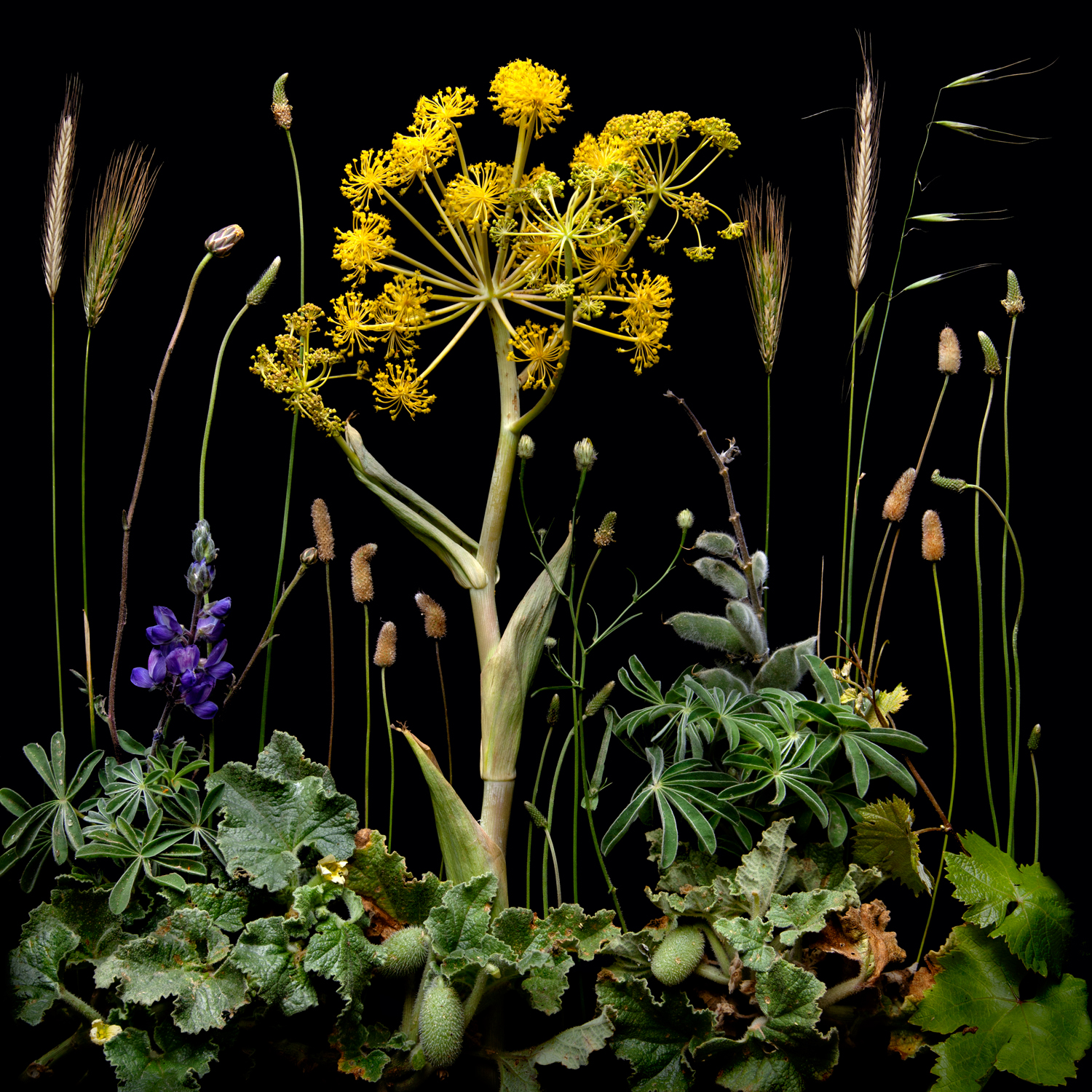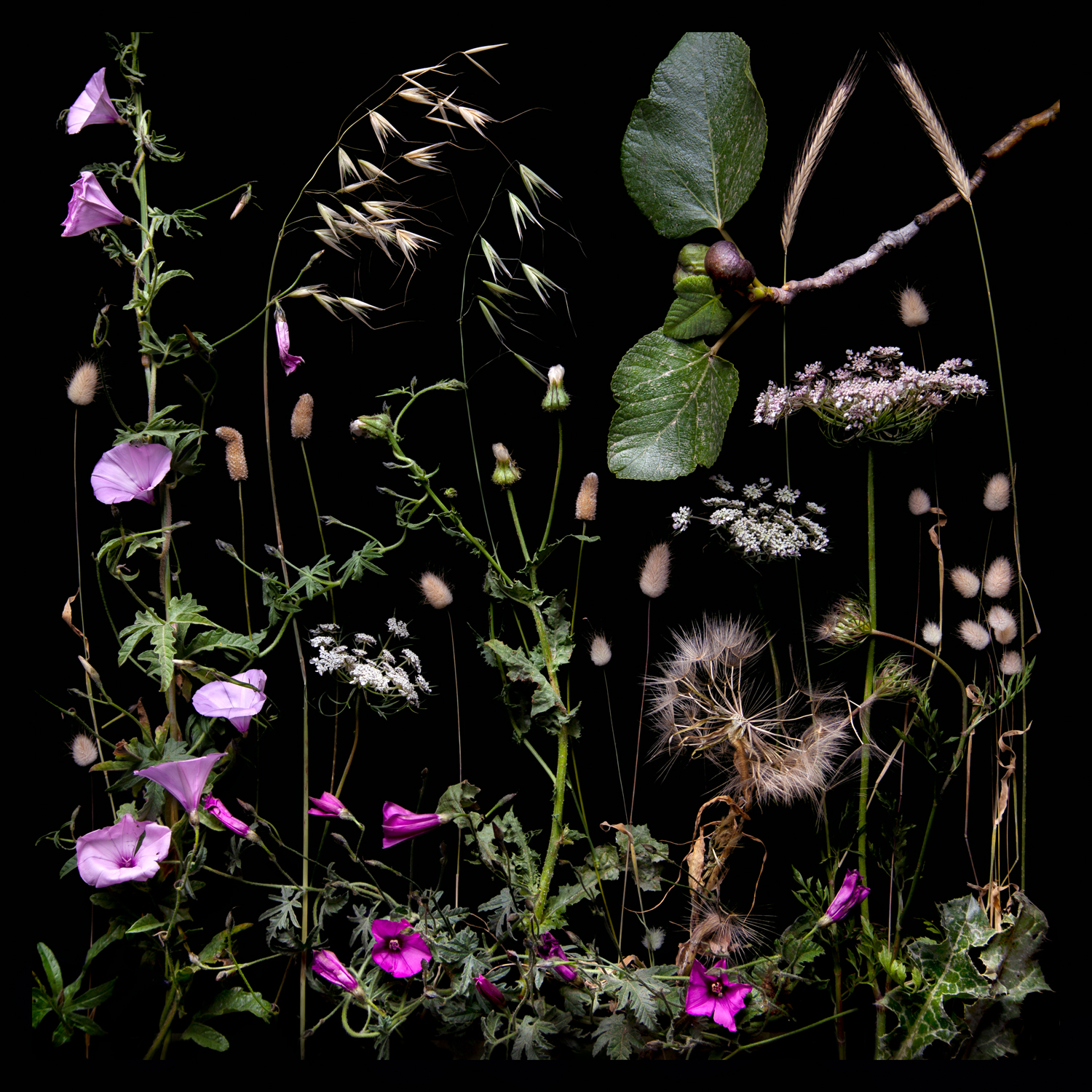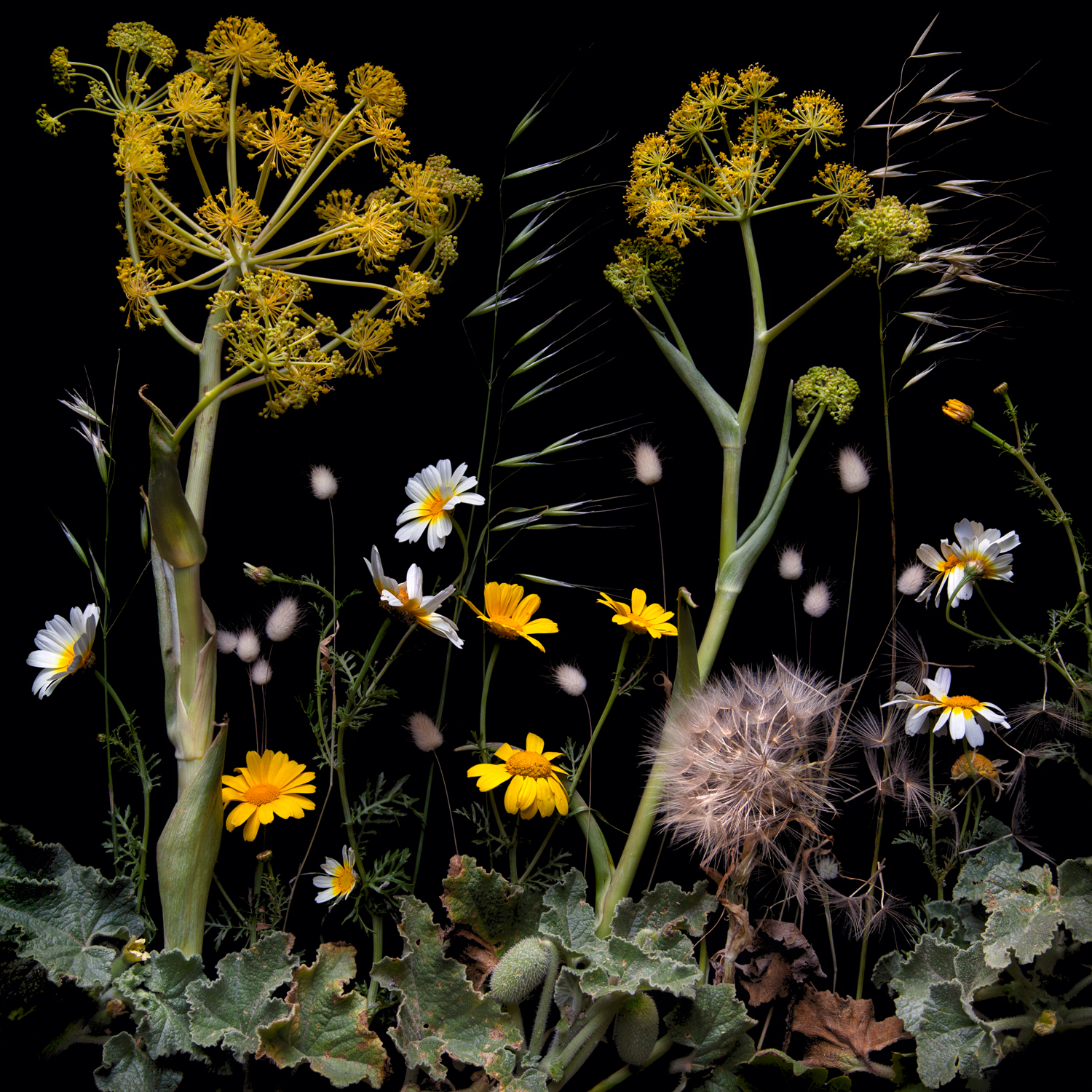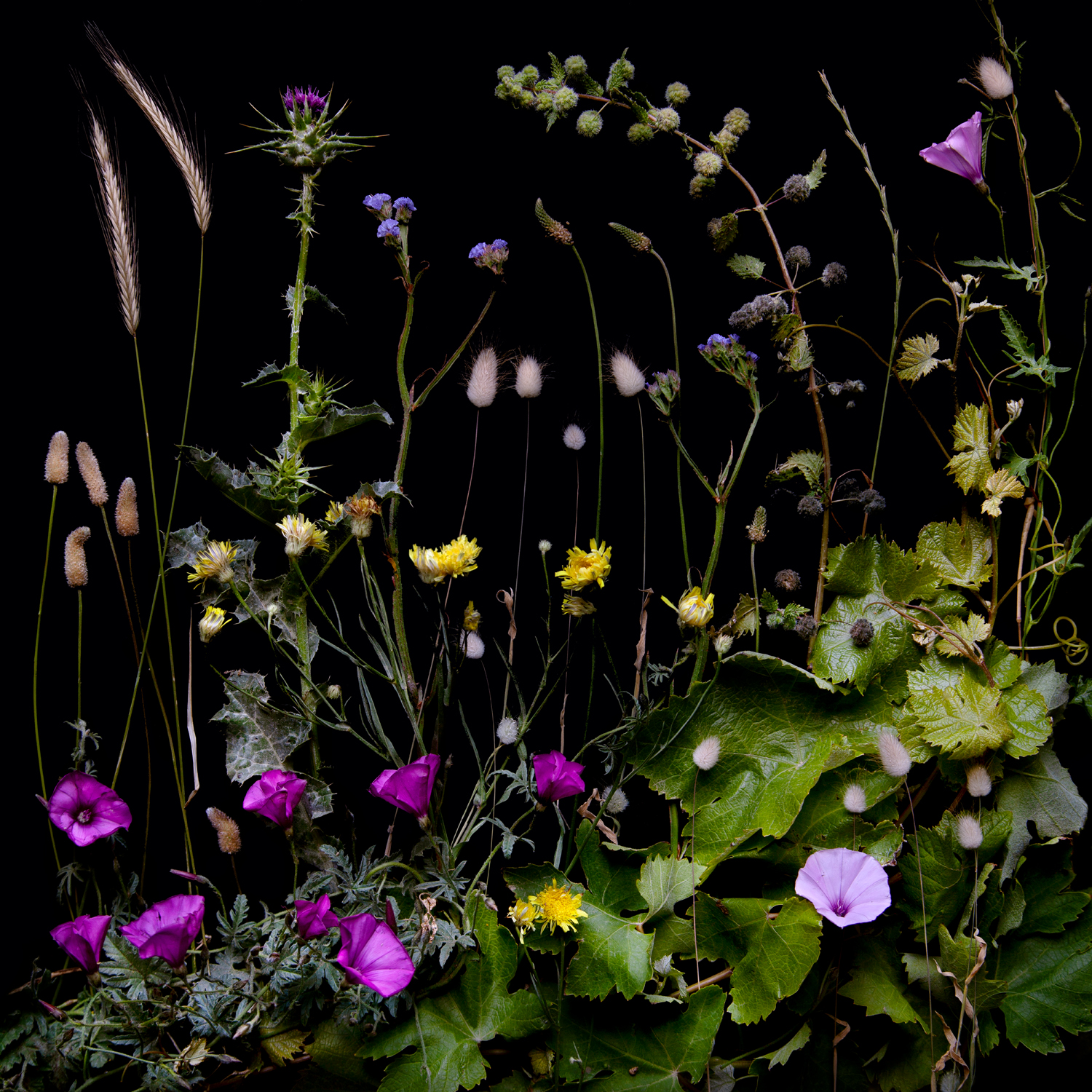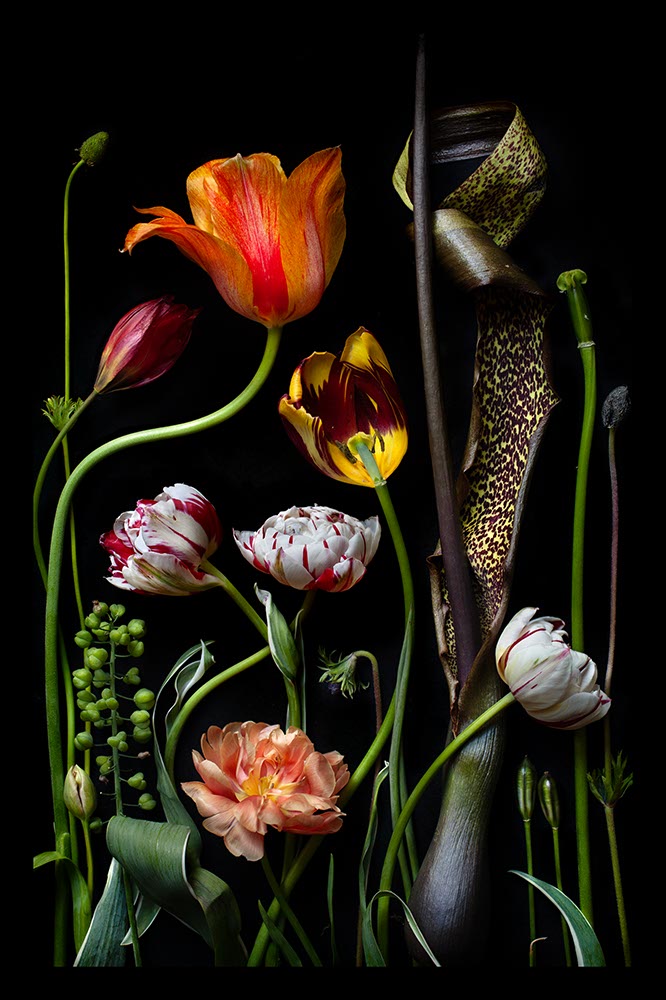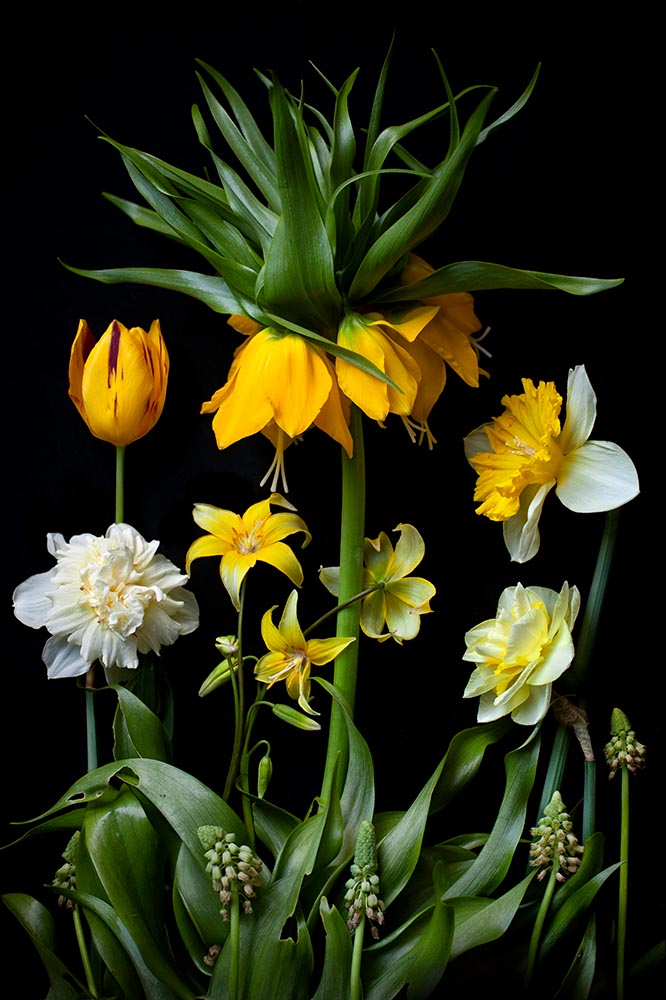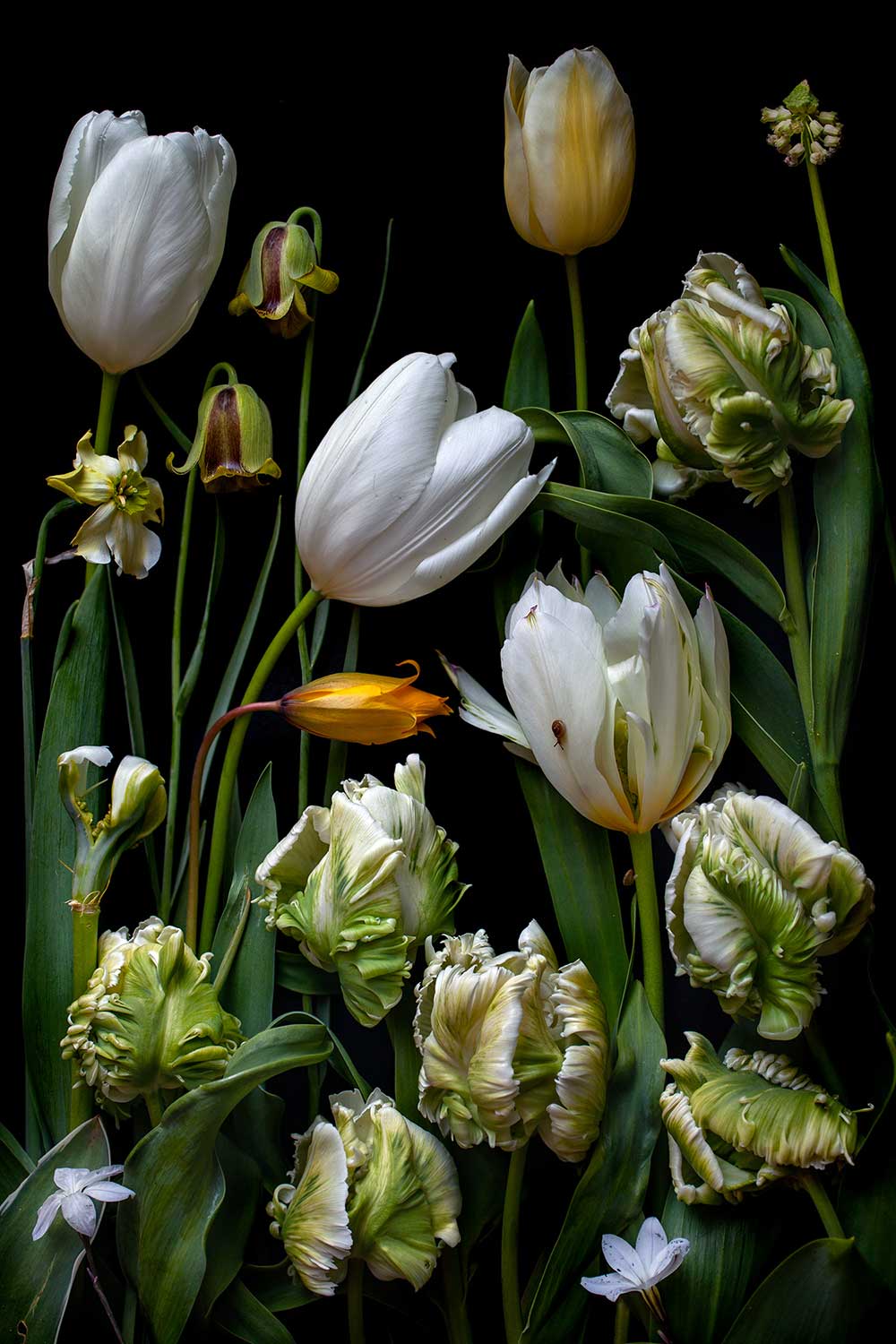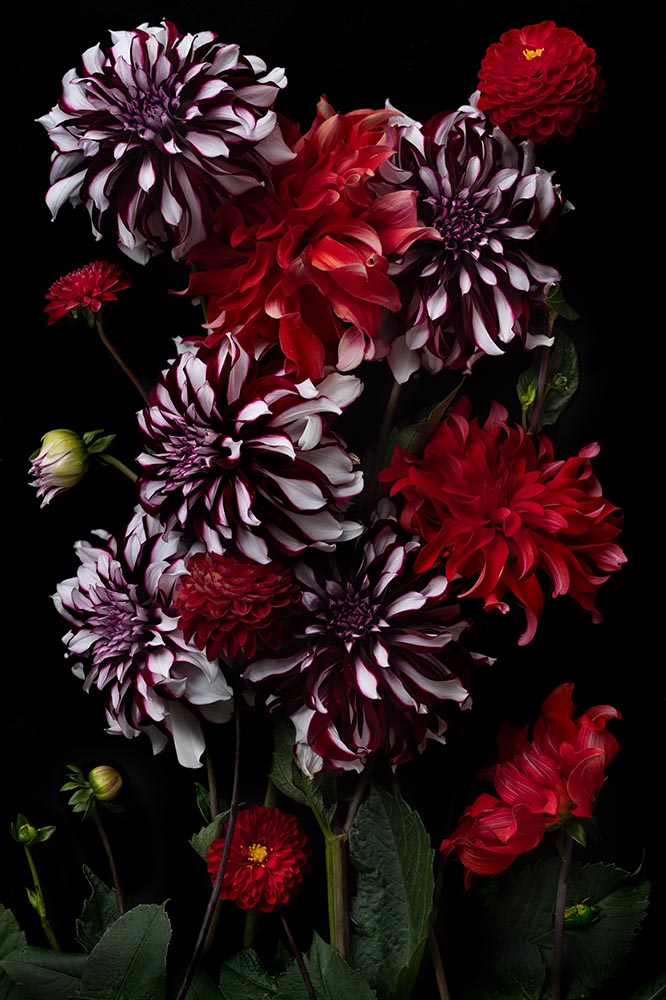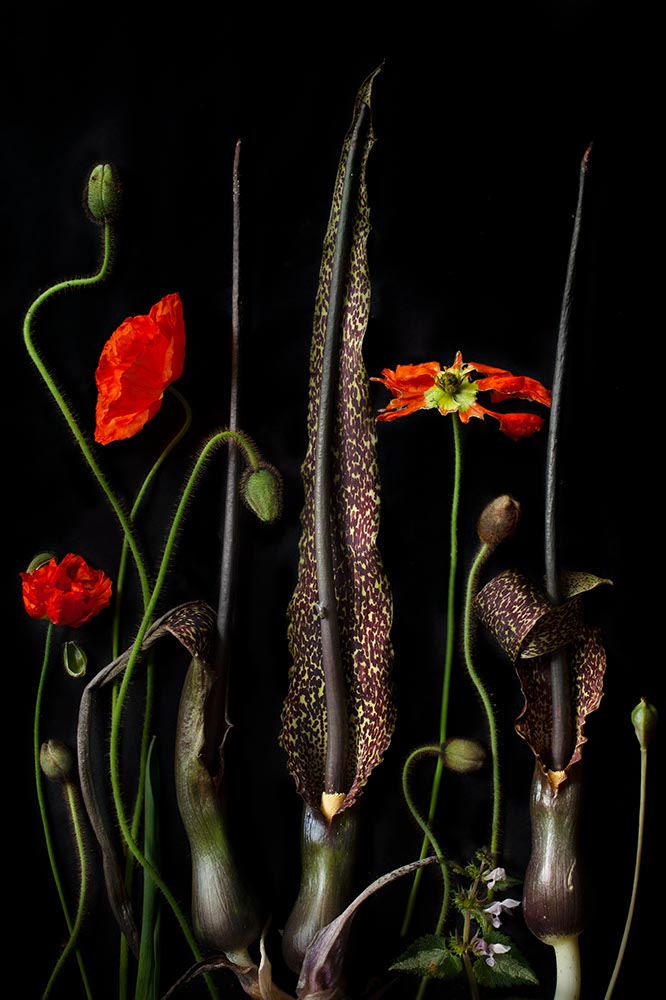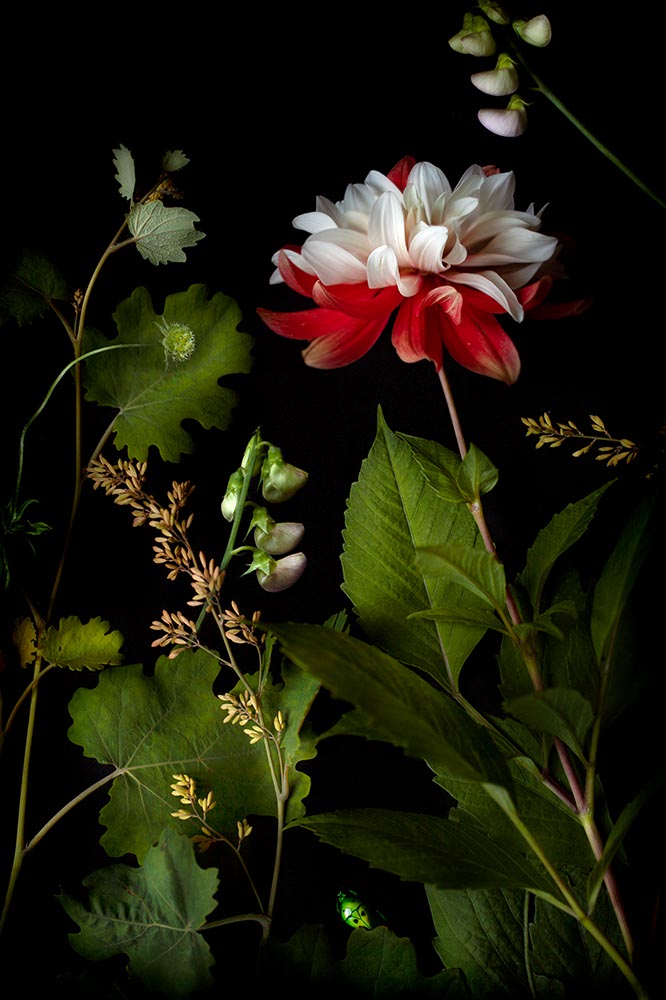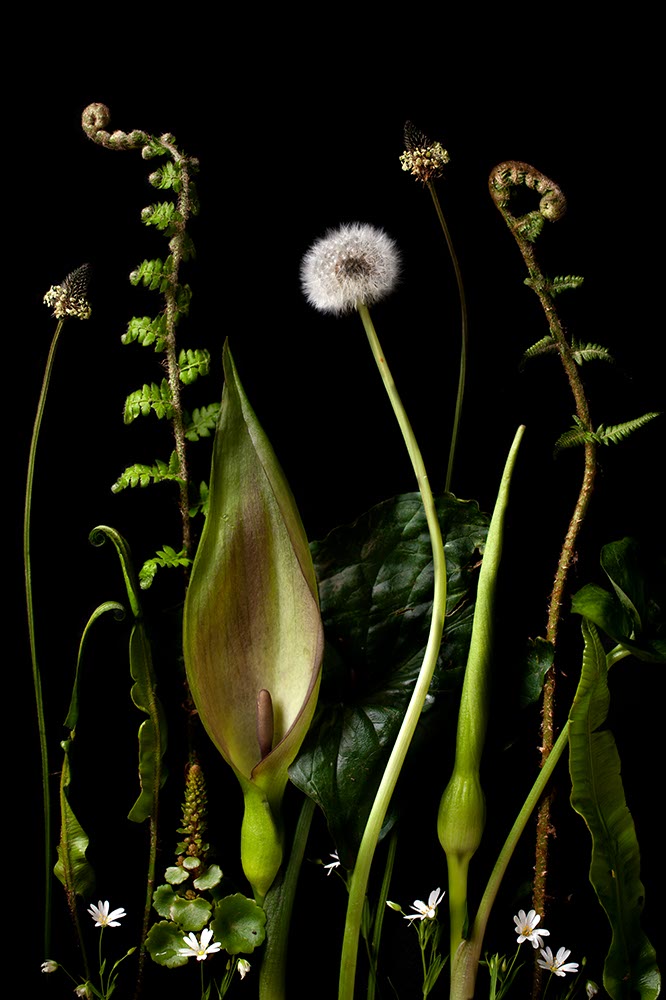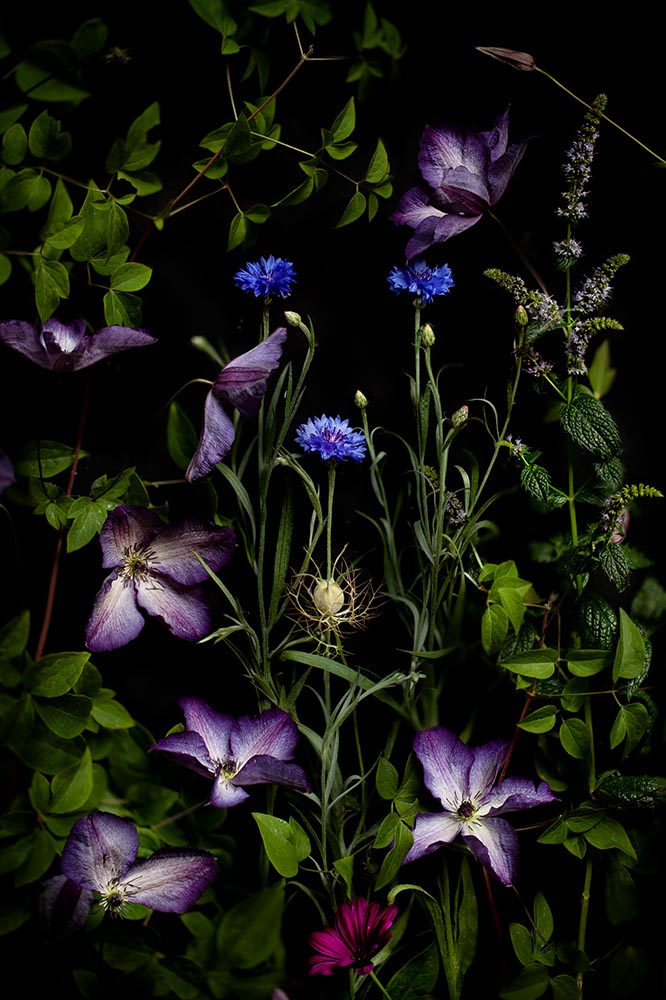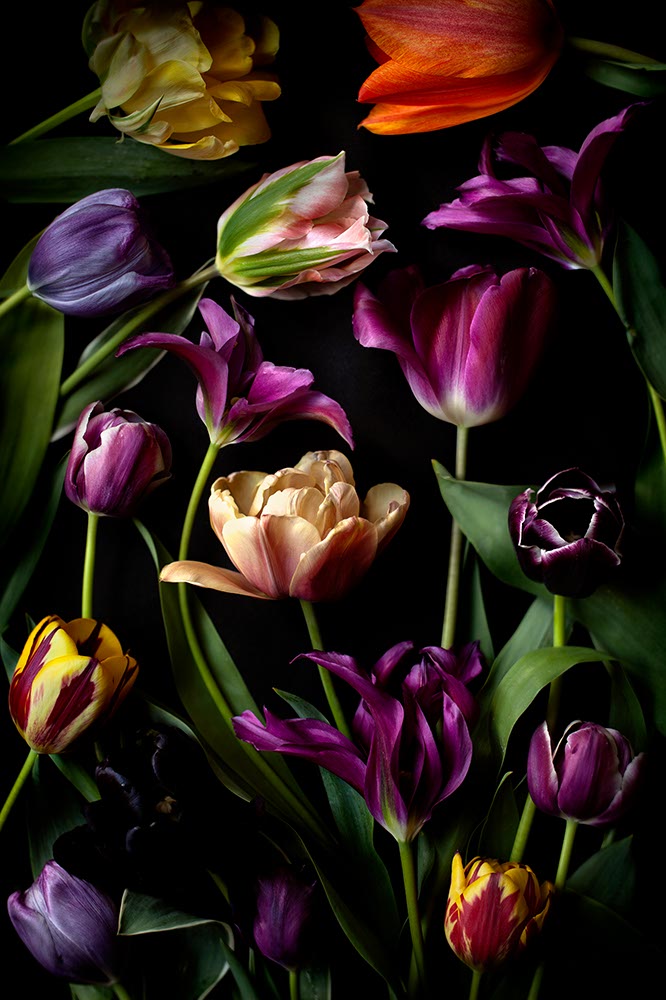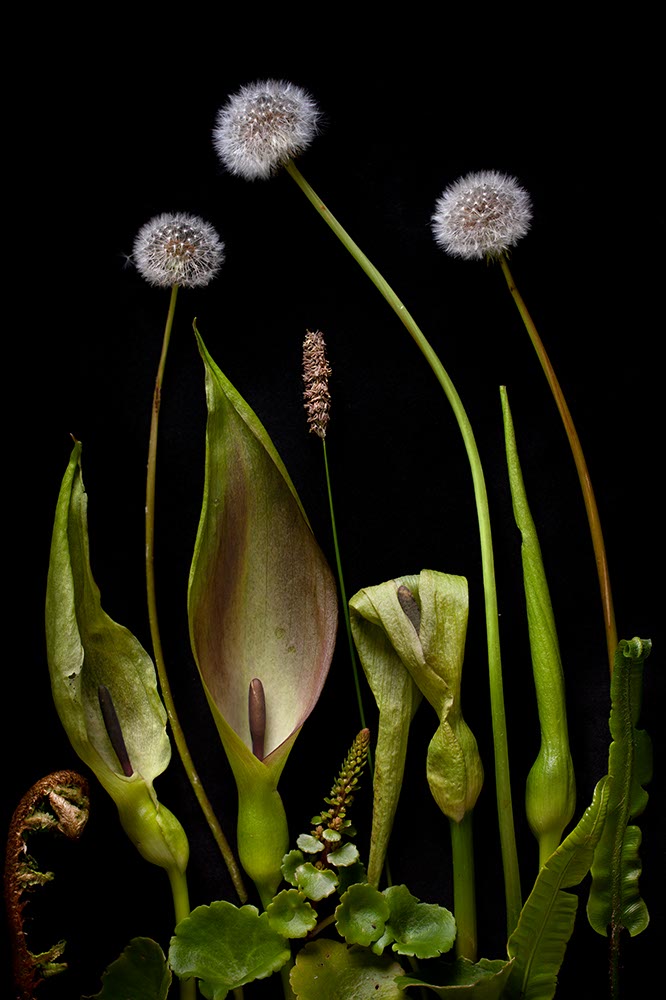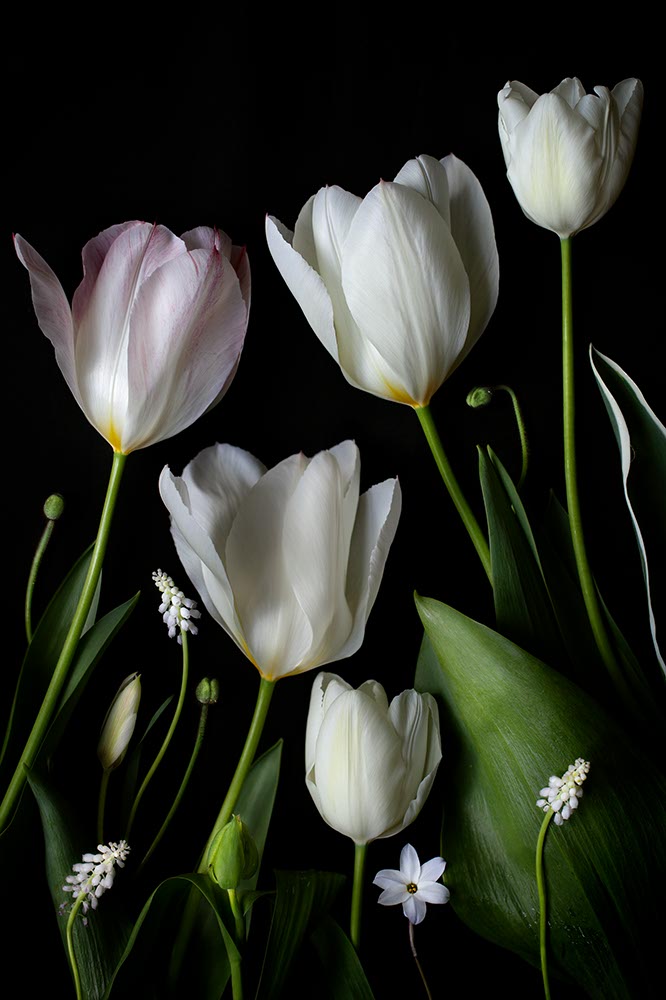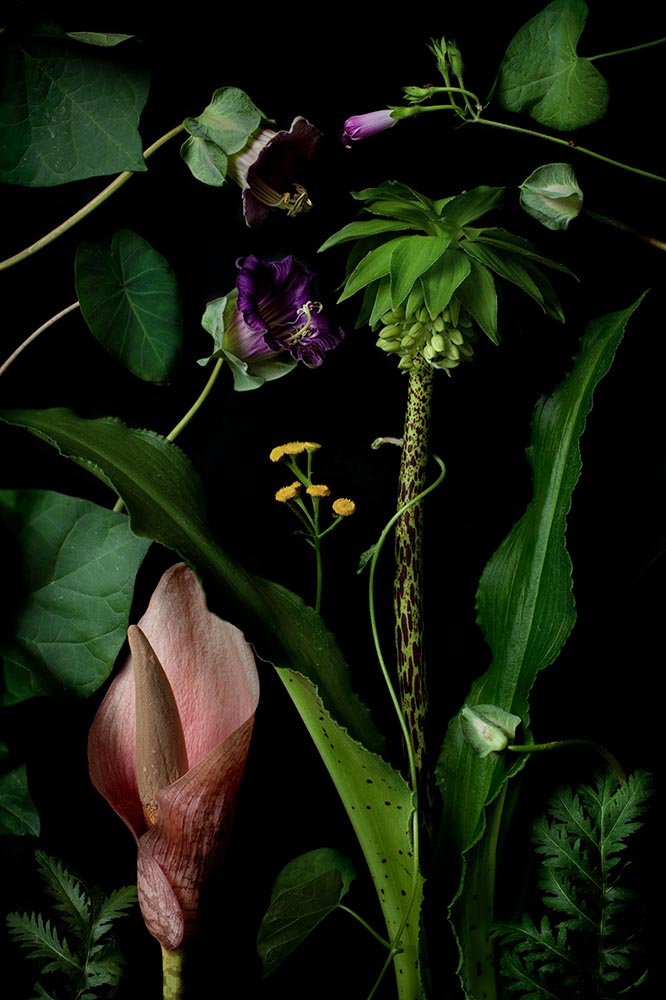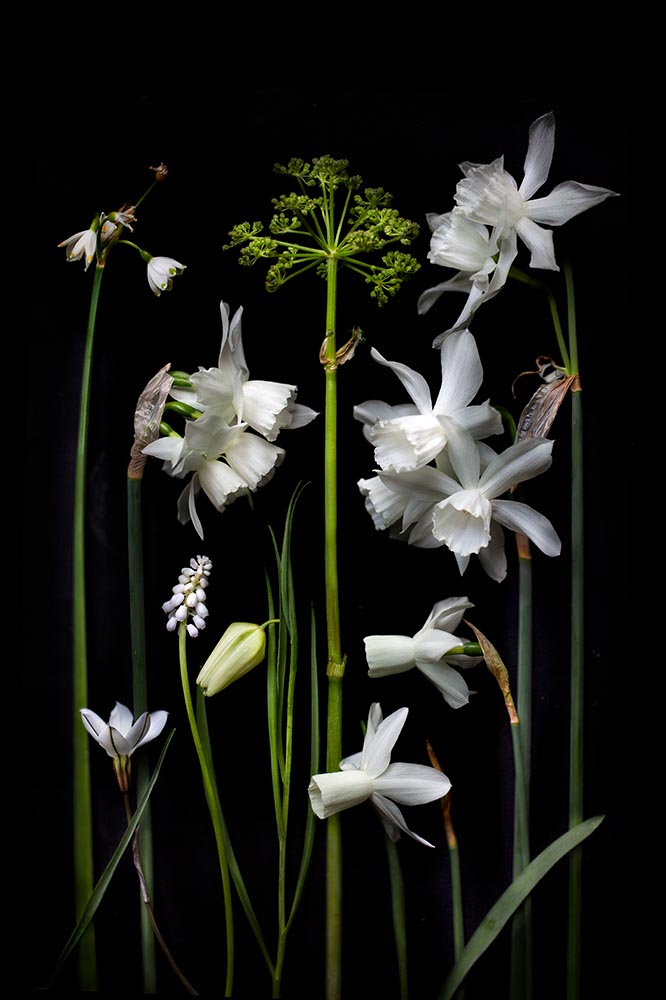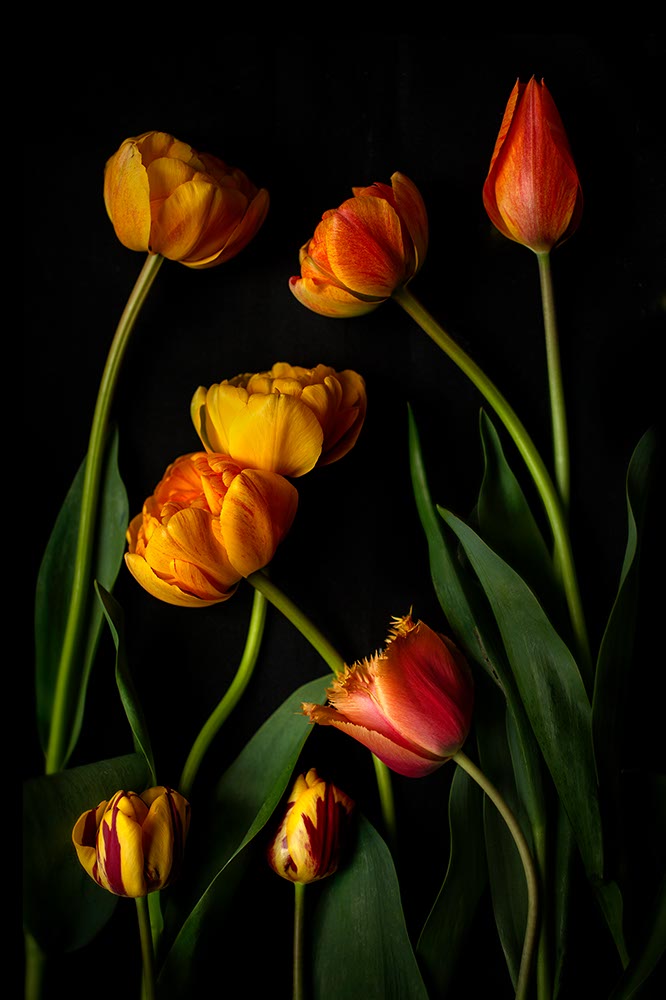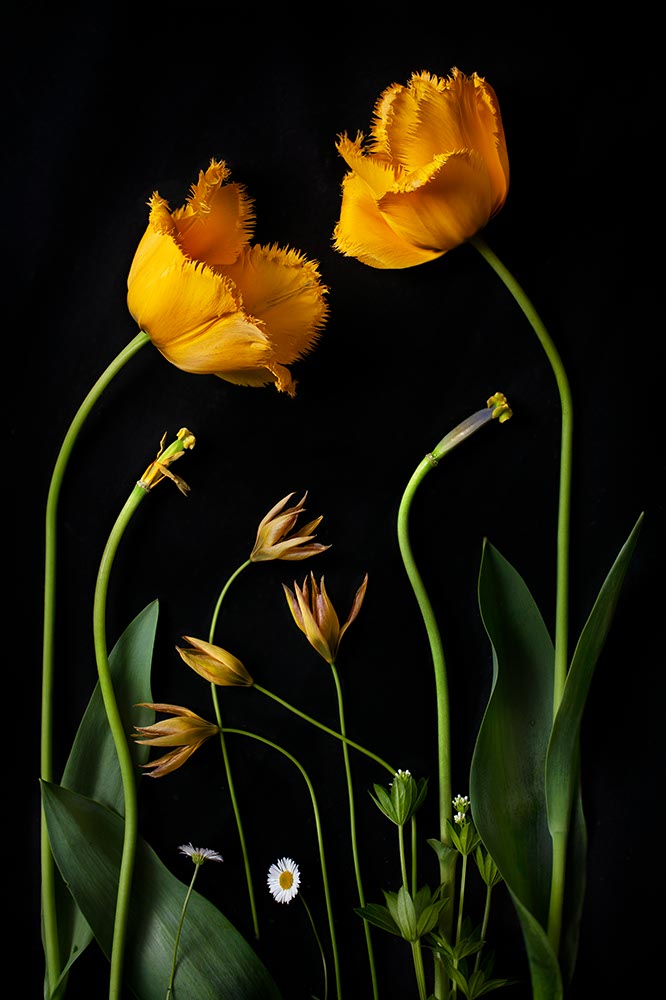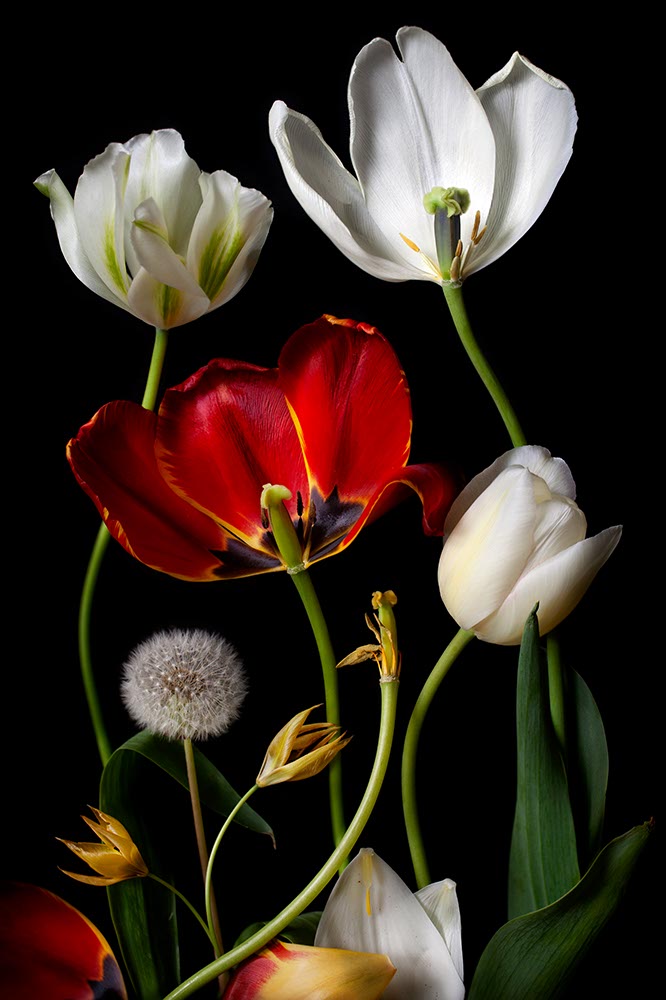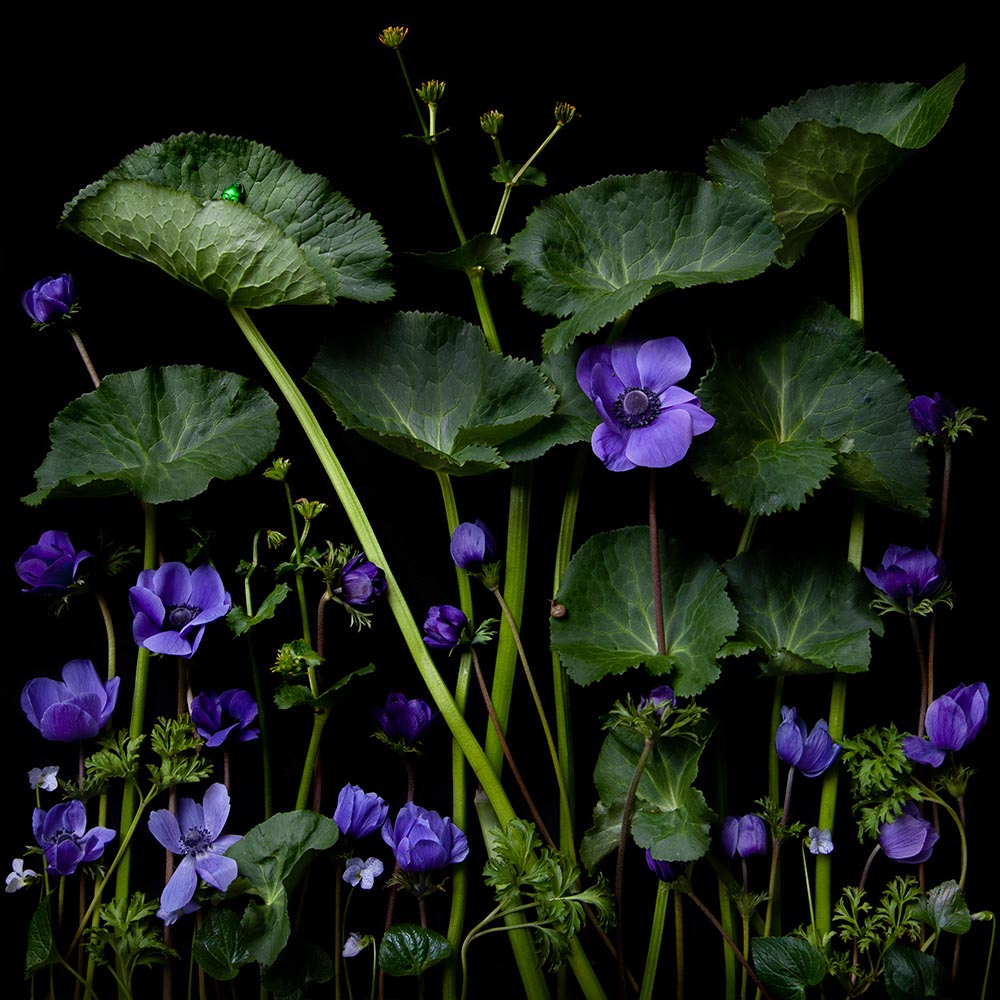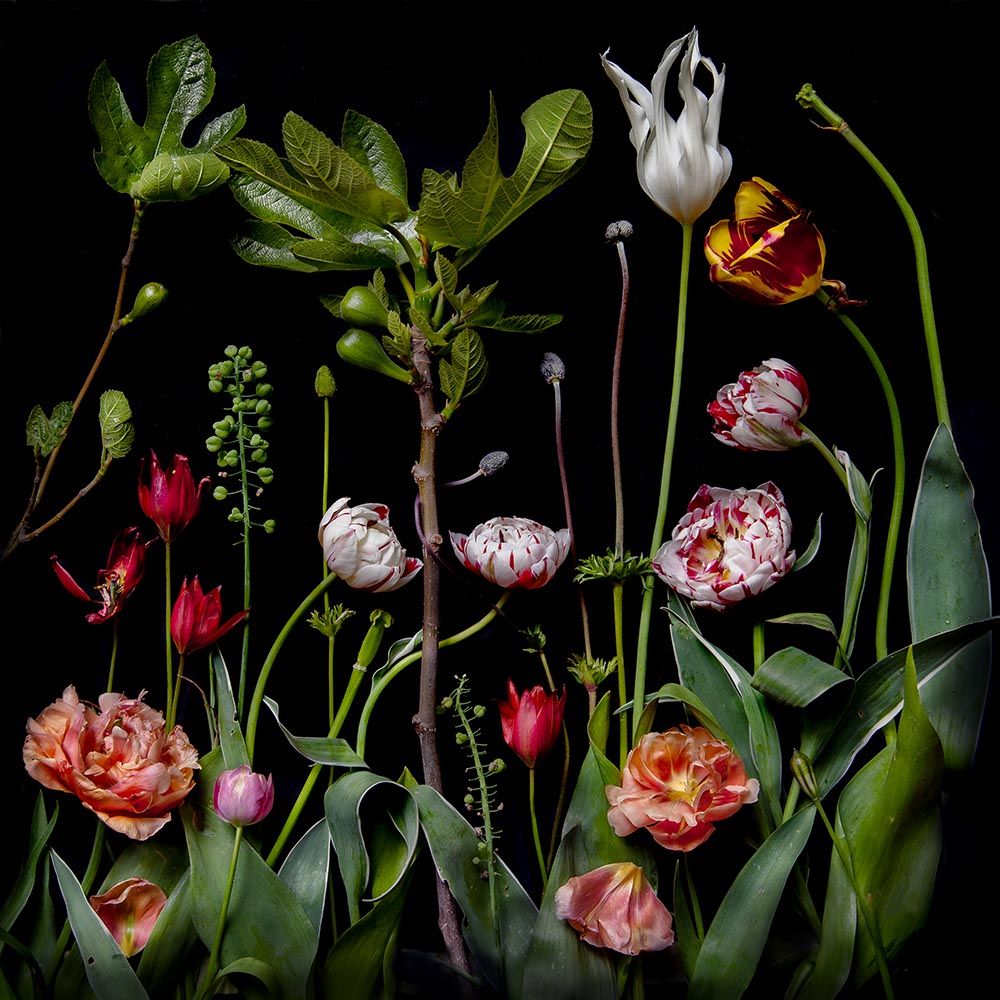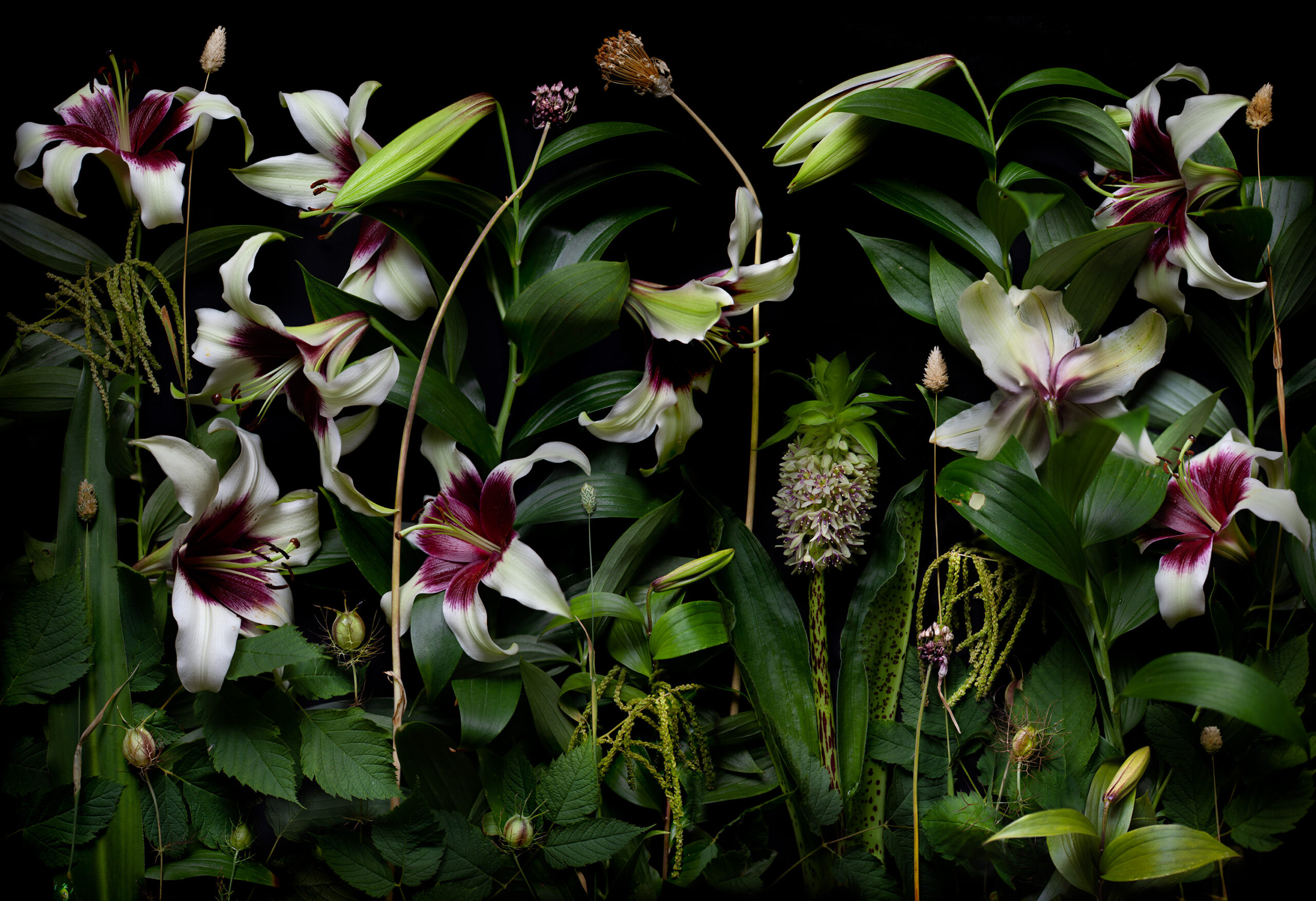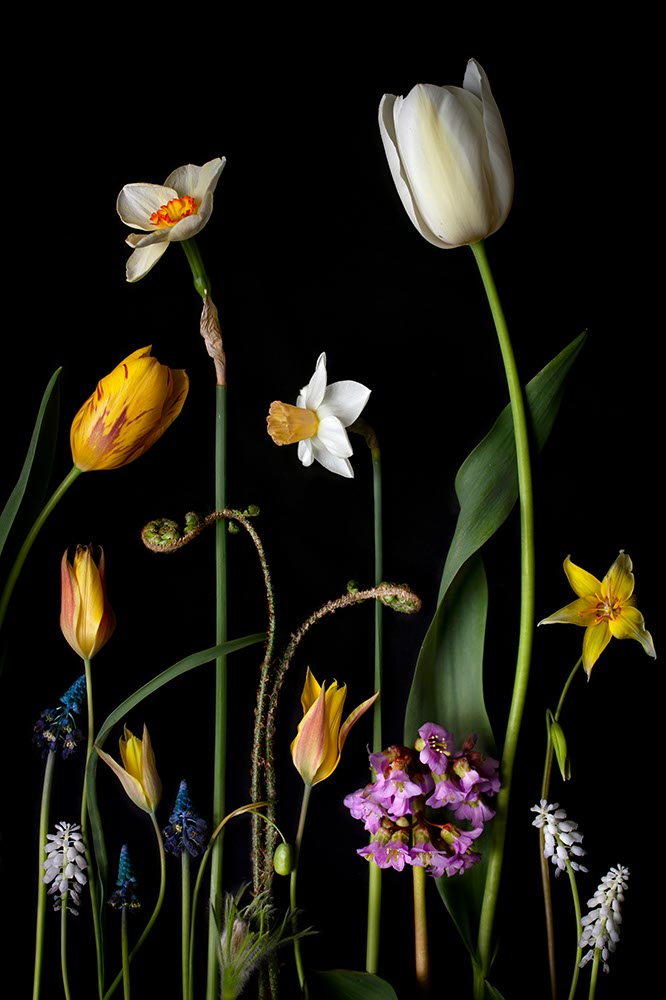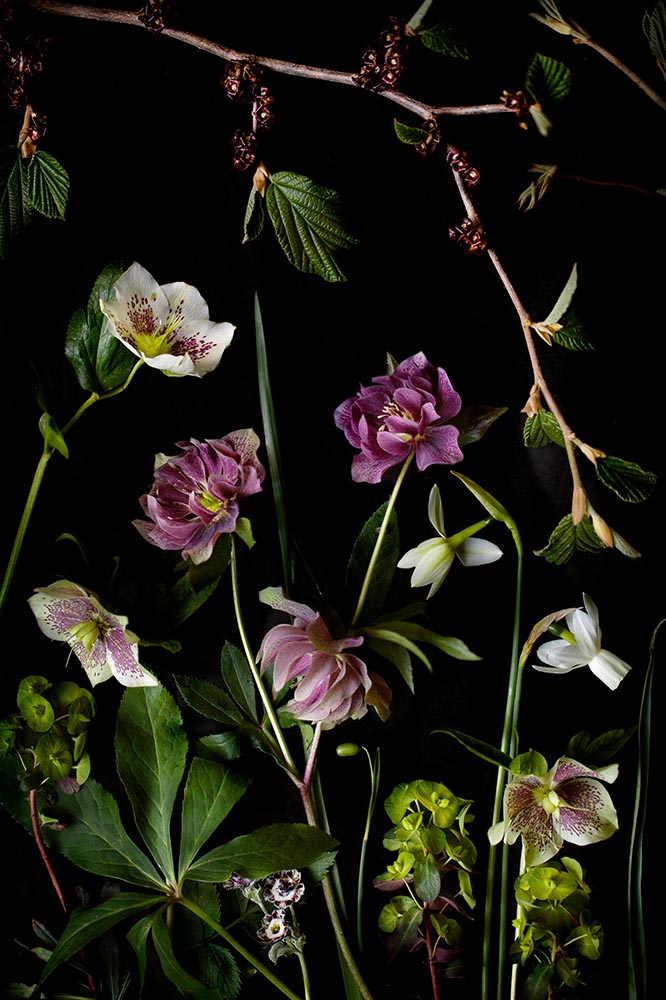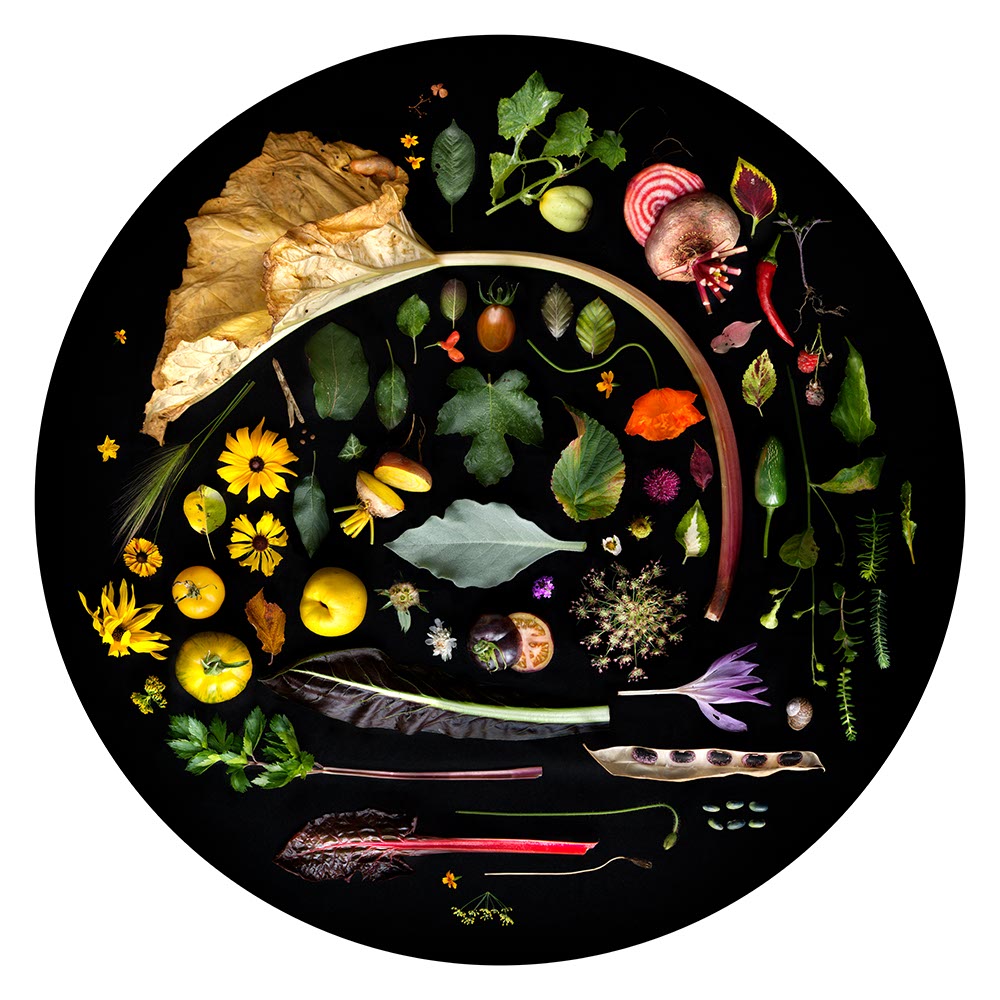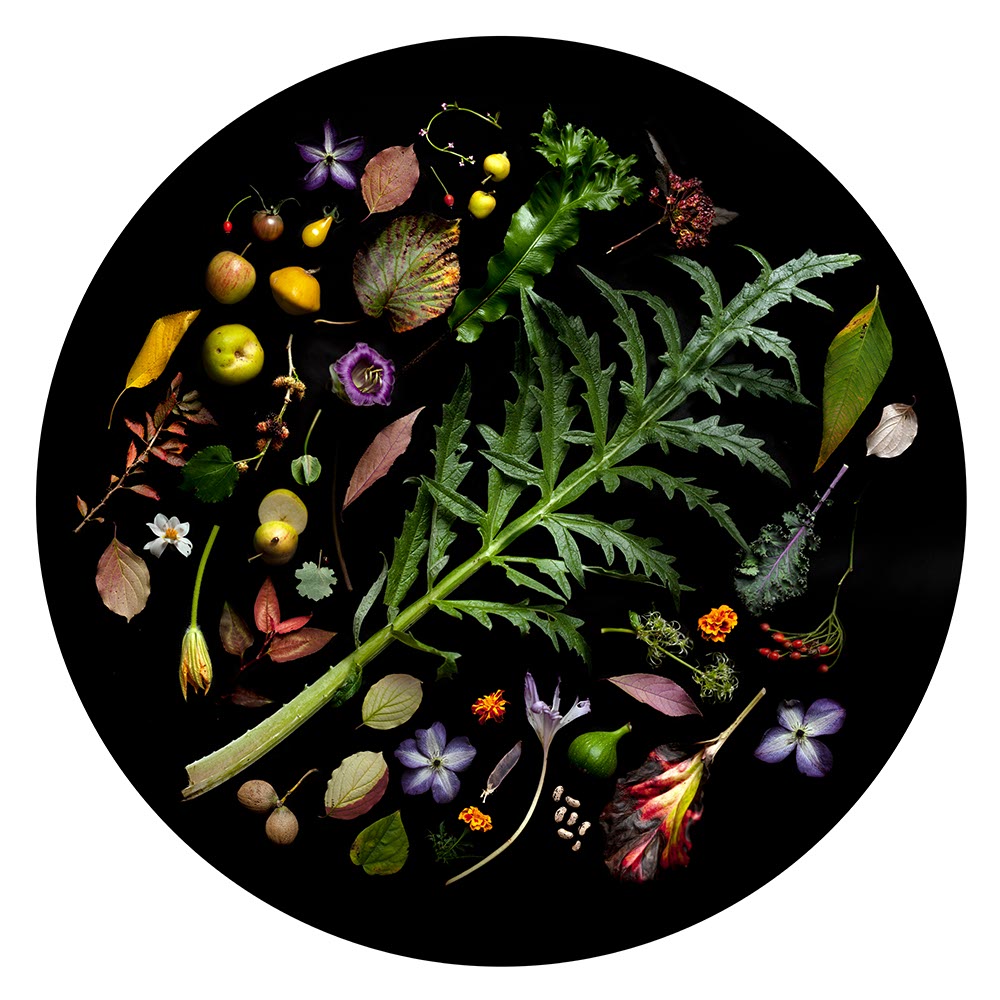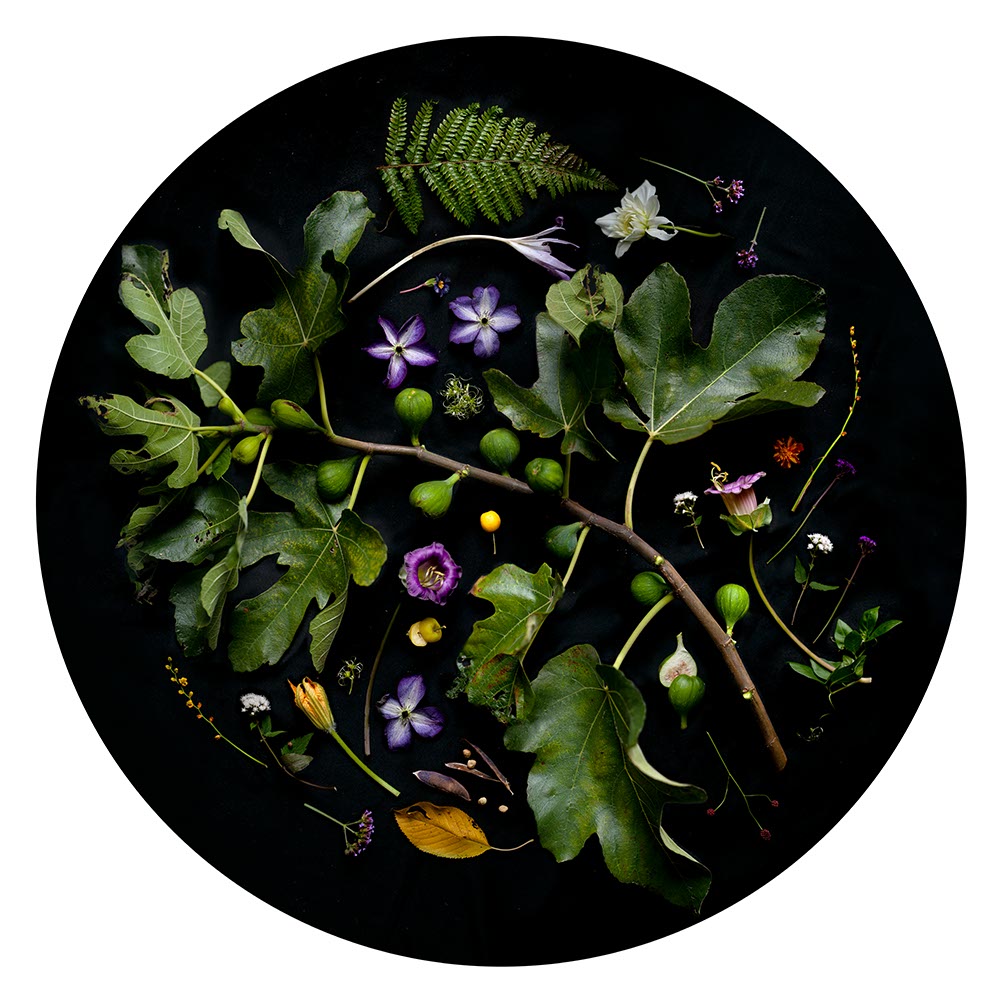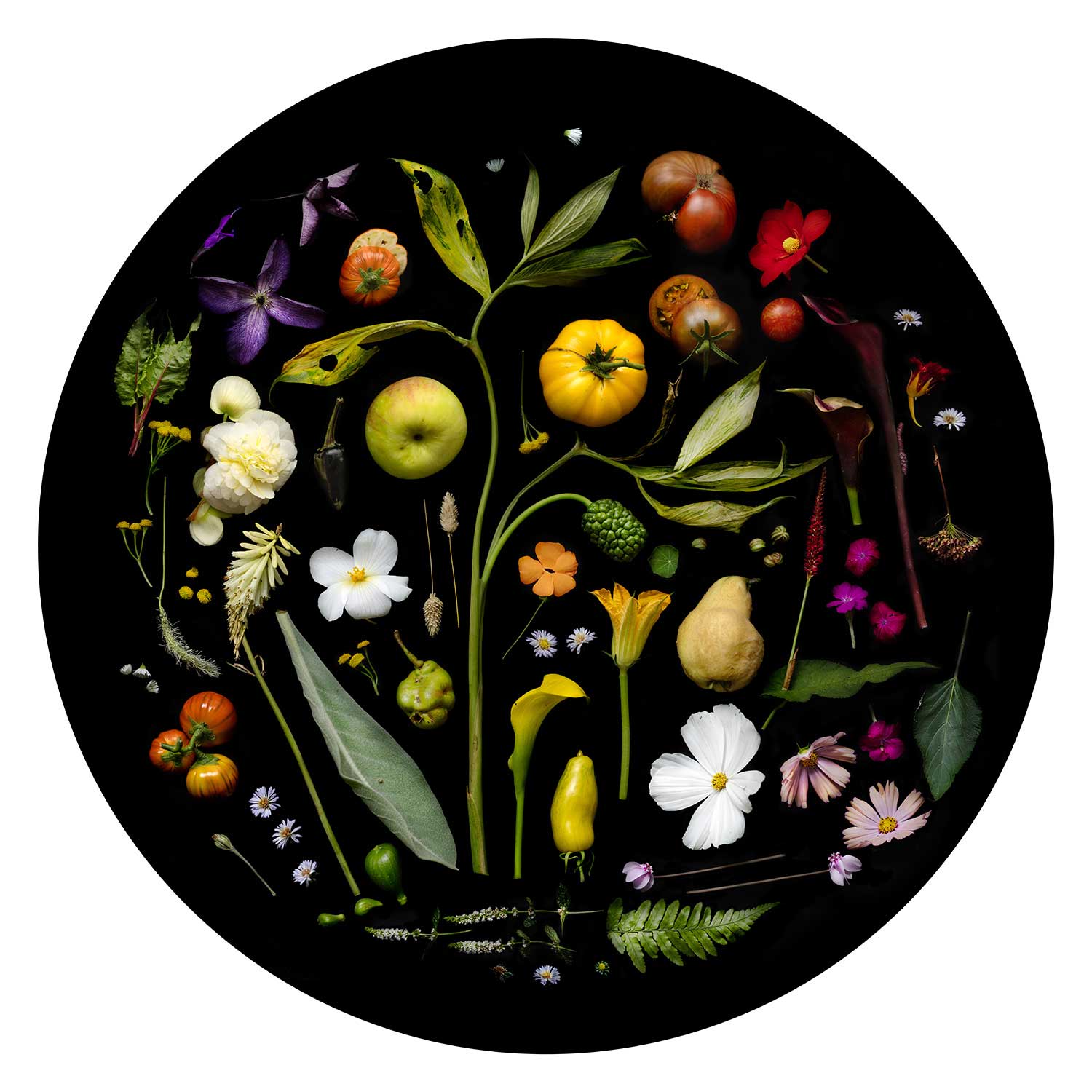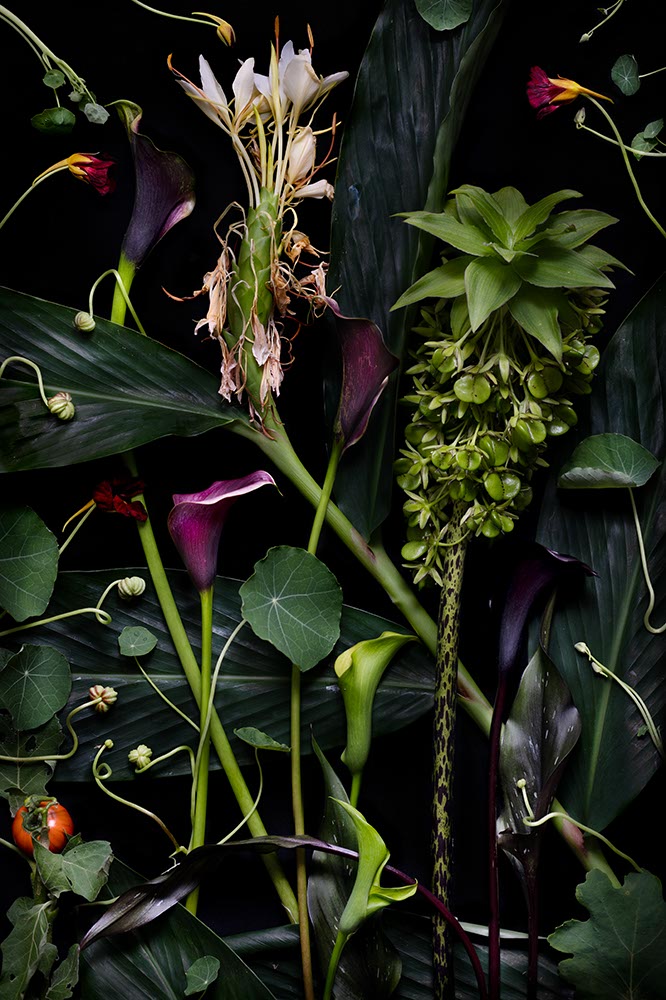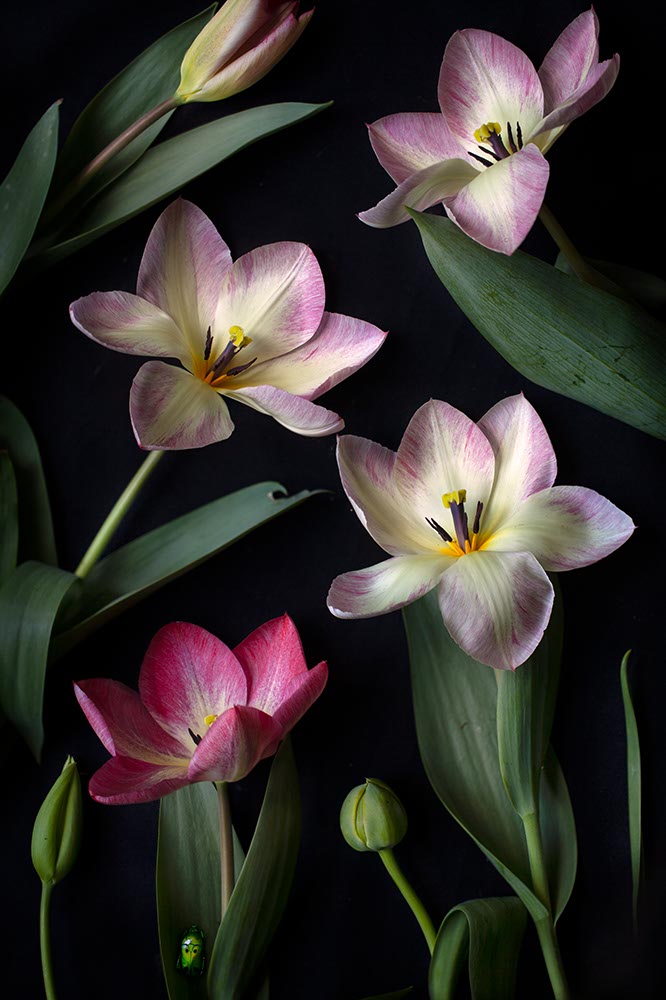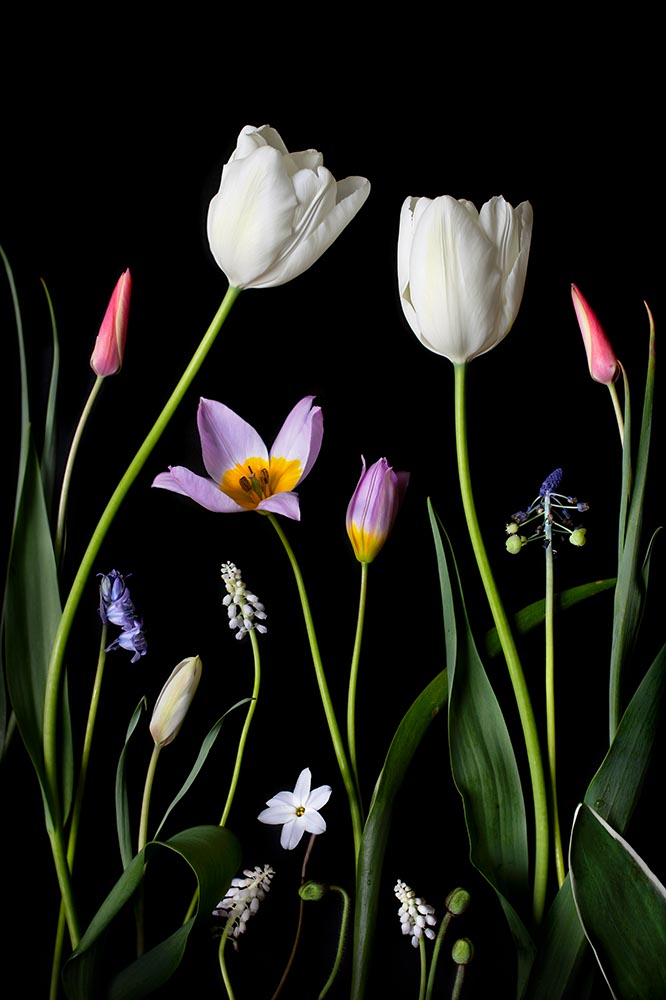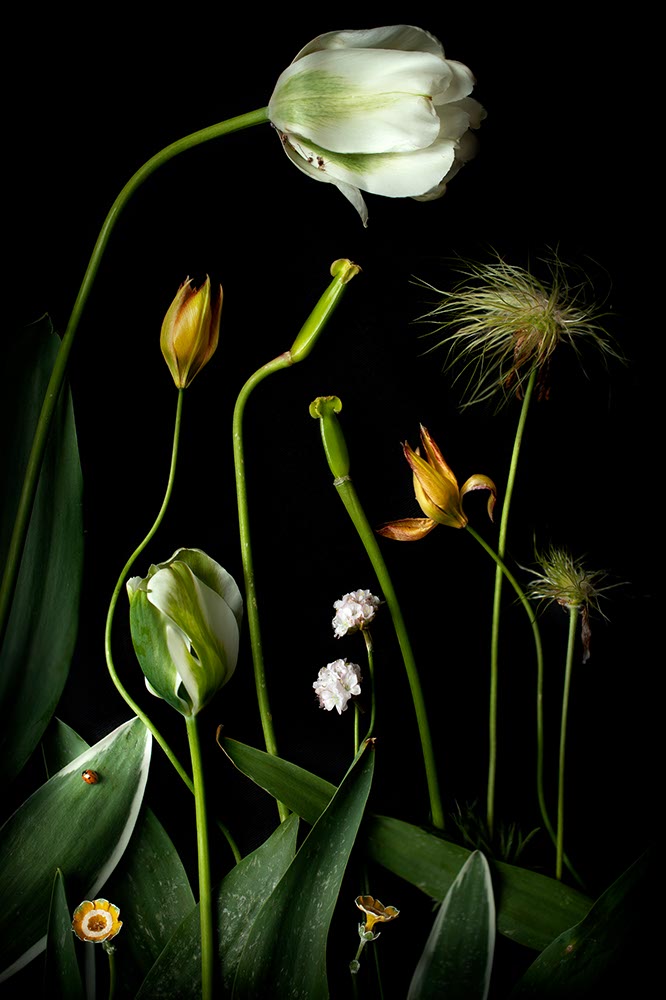About these works …
These are not typical botanical portraits. The images here form part of a larger, ongoing series of contrived botanical scenes. The plant specimens are composed and photographed together in low light to set an uneasy balance of lush floral beauty surrounded by an ominous and isolating darkness. Grown and harvested in my south London garden (The Garden Construct) or collected from specific sites in the UK and other countries (The Wild Construct), the plants chosen expose the reality of the environment in which they grew.
These ‘imperfect’ subjects create a narrative reflecting the challenges of our changing climate as well as those of the local environment. Whether it be petals deformed by a freak hail storm, stunted leaves caused by drought or flowers blooming outside of their season, these nuances build a deeper understanding of the environment in which the plants grew and in which we live.
Notwithstanding the absence of humans in my work, these images are as much a portrait of plants as they are a record of the people without whom these plants would not exist. For example, groups such as the 17th century tulip breeders who set the course for so many varieties to be brought into existence. Victorian plant collectors responsible for the diversity of species in cultivation today. Farmers creating and maintaining the landscape and its niche habitats in which plants thrive, and modern day industrial growers allowing the mass distribution of plants. These groups have all played some part in the evolution and existence of the plant life in these photographs. In effect, each image is a documentation of the imprint these people have left on the world.
In a world where plants are now part of mass manufacturing processes, these images portray botanical life at a more individualistic, but no less curated level. This throws focus onto subjects that can be perceived as being directly of nature or natural, but the very existence of which relies entirely on human need, imposition or desire. By exposing these dimensions of our relationship to the natural world, I hope to enable us to engage more richly and in new ways with subjects that we thought we knew so well.
The Garden Construct Series
I use no pesticides or herbicides in the garden. This often results in insects, slugs and snails living on and affecting the plants I’m preparing to photograph. Rather than exclude these clusters of greenfly on stems or slug-nibbled leaves, this additional context is embraced. It highlights the underappreciated tapestry of insect life that exists around us and from which we often choose to separate ourselves, despite it being the very base of our own food chain.
The Wild Construct Series
The images in The Wild Construct Series look to create vignettes of an overlooked world. Collected specimens are taken from unloved sites, typically roadside verges. These sites were chosen specifically to explore the concept of “plant-blindness”, a phenomenon described as “the inability to see or notice the plants in one’s own environment”. The result of this is we tend to under appreciate the flora around us and often do not see the beauty that exists in the spaces we pass by every day – such as the plants gathered from these roadside sites.
The phenomenon of ‘plant blindness’ in humans is partly caused by the way we categorise the world into immediate threats and non-threats. Because plants barely move, grow close to each other, and are often similar in colour, our brains tend to group these non-threatening organisms together to reduce cognitive load and focus on possible threats. This allows our visual system to filter and clump together plants so we see a mass of green and rarely the individual plant. By isolating specimens out of context and placing them directly in front of the viewer we are immediately able to focus on the individuals and their details uncovering a typically overlooked world.
